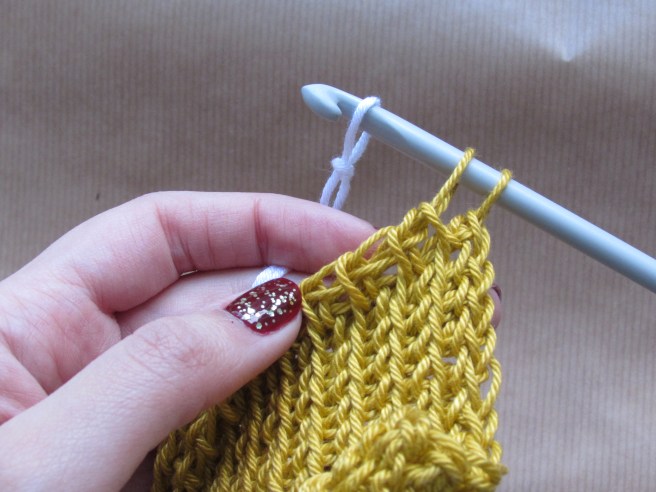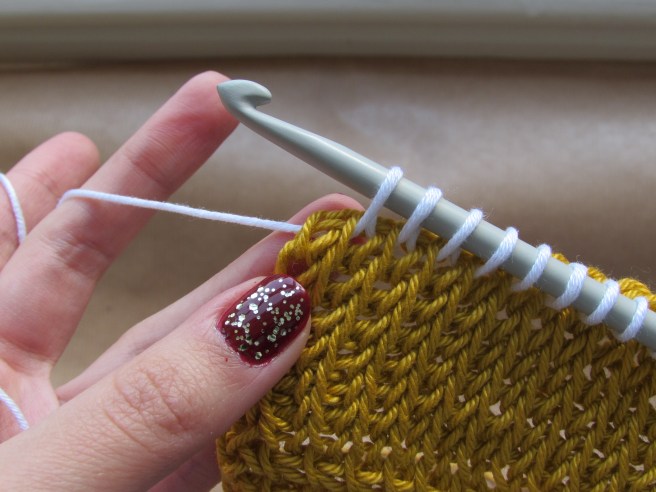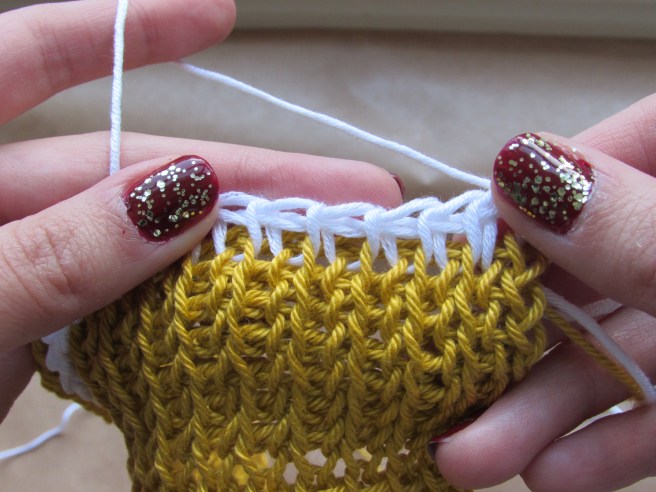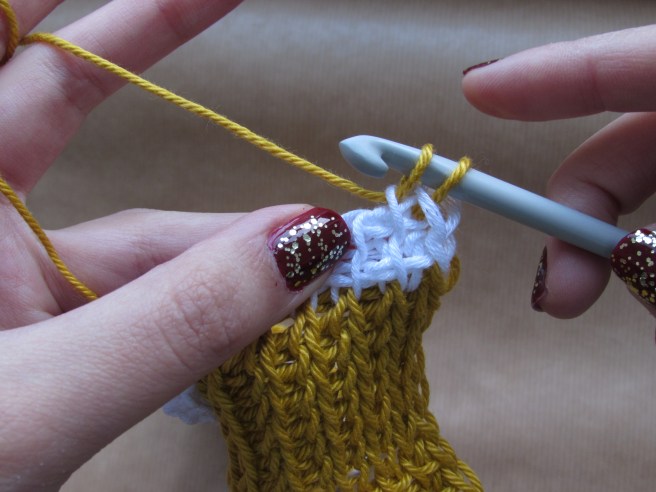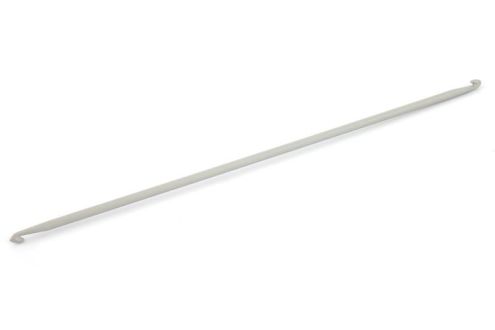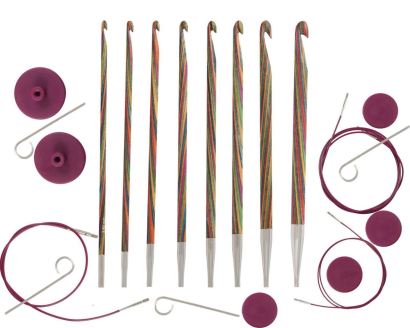It has taken a while but I am finally back with another tunisian crochet tutorial. I am taking a break from stitches and will teach you how to change colours, simply because my new pattern requires this and I thought it would be easier if there was a tutorial available.
There are a few ways of changing colours in tunisian crochet and I will only go through one today, changing colours at the start of the forward pass. This gives a clean colour change and it is what you would use for stripes. I will cover the other types of colour change in the future but this is the most basic one.
I will also explain how to change colours and stitch at the same time as part of this tutorial, it will be useful for my next pattern. If you are following any tutorial of course you will have the instructions for each row and this will tell you when to change to each colour and what to do if you are also changing stitches but this tutorial will help if you are playing with stitches and decide to create something by yourself. I think tunisian crochet is quite good for creating your own scarves by just changing stitches and colours, it gives a very nice look.
So let’s look at our sample so far!
We left off with a few rows of tunisian knit stitch (Tks), I can see six rows defined as Tks in my sample. Let’s say then that I want to work seven rows of Tks and then change colour and change back to tunisian simple stitch (Tss) at the same time for a couple of rows. If you only want to learn how to change colours then this is not important of course.
First, I need to work the return pass on this row. So yarn over and pull through one loop.
Yarn over and pull through two loops, repeat until you have two loops left of your hook. This is the difference when changing colours: in a normal return pass you yarn over and pull through one loop and then yarn over and pull through two loops all the way until you have just one loop left on your hook. In this case we are stopping just before working the last part of the return pass.
You do this because if you want to have a different colour at the beginning of the next forward pass you need to change colours at the end of the return pass. Now, keeping those two loops on your hook do a slip knot (this is not strictly necessary but I still do it) with the new colour.
Pull the loop with the new colour through the two loops on your hook finishing the return pass.
If you just wanted to know how to change colours and you are not changing the stitch as well that is it! You just continue working your stitches with the new colour.
If you want to know how to also change stitch at the same time then stick with me for a little bit. We said we wanted seven rows of Tks in yellow and two rows of Tss in the new colour. If you work normal crochet you would probably think that since you are now working with the white and you want Tss for this colour then that is what you should work now. But no! If you look at the sample you will see that even though we have the seven rows in yellow, not all of them are defined as Tks.
So… even though you are working with the white yarn, you will work this row as tunisian knit stitch because as I have said before what you do in each row will define the stitch of the previous row and create a new undefined row for you to work next. Therefore, insert your hook on the next stitch (remember we always skip the first one) as Tks between both vertical bars.
Yarn over and pull up a loop.
Continue all the way through until the last stitch, which you know by now is worked the same regardless of which type of stitch you are using. Insert your hook under two loops (I explain this in detail on my tunisian simple stitch tutorial) yarn over and pull up the last loop of the row.
Work return pass normally. So now you will have seven rows of Tks in yellow as you wanted and one undefined row in white. Since you know that what you do next will define that undefined row then you will have guessed that it is now that you start working Tss.
So insert your hook as Tss.
Yarn over and pull up a loop.
Continue working Tss until the last stitch, work last stitch normally.
We said we wanted two rows of Tss in white. If I worked the return pass normally now I would actually see two rows in white: one defined as Tss and one undefined. Since two rows is all I need then you will need to change colours at the end of this return pass.
So work the return pass until you have two loops left on your hook. You now see your two rows in white and this is what tells you to change colours, it doesn’t matter if that last row is not defined yet, you will define that next.
Drop the white, yarn over with the yellow and pull through the last two loops. For two rows I wouldn’t bother cutting the yarn, you can just carry it along in the back if it works for you.
You now need to work Tss, since that is what you want for that last white row. So insert your hook as Tss on the second stitch.
Yarn over and pull up a loop.
Continue until last stitch, work last stitch normally.
You can see now that we have what we wanted! Seven rows of Tks and two rows of Tss in the new colour. If you work the return pass you will have a new undefined row in yellow, ready to become any stitch you want.
That is it for today everyone, hope that is clear and as usual let me know if you have any questions. Will post the pattern for the first chunky cowl soon now that you know all about changing colours!
x
Sol






